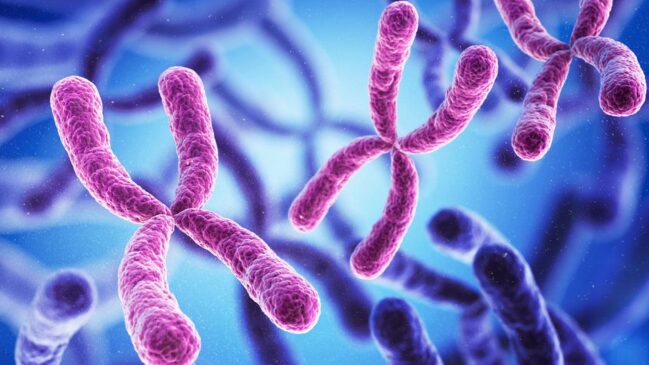
Females have one active X chromosome and one dormant X chromosome in each cell. But a study suggests that genes on the dormant X get “reawakened” later in life, potentially giving the brain a boost.
Dormant genes on the X chromosome may reawaken in old age, potentially giving the aging female brain a boost that the male brain doesn’t receive.
This phenomenon may help to explain why, on many measures, females show a higher level of cognitive resilience in old age than males do.
The findings come from a new study in lab mice, and the researchers also backed up the results with genetic data from humans. More research is still needed to confirm that the findings in mice translate to people, but overall, the work points to a potential difference in how female and male brains age.
Historically, “we simply haven’t looked at the X chrom[osome] very much,” said Rachel Buckley, an associate professor of neurology at Harvard Medical School who was not involved in the new study. “And now we’re starting to really shine a very, very big spotlight on it, and we’re starting to realize things that we had not fully appreciated” — namely, how sex chromosomes might influence how the brain ages.
“There are very important and potentially therapeutic targets that are coming out from these papers” that focus on the X chromosome, Buckley told Live Science.
The resilience of the female brain
There seem to be fundamental differences in how males and females age. When it comes to the brain, females have lower rates of various forms of dementia than males do, even though females live longer, on average. One exception is that females have higher rates of Alzheimer’s disease than males do, although females with Alzheimer’s tend to survive longer than males with the condition.
“There’s been a lot of documented trends where there’s resilience in cognitive aging in female populations, compared to males,” said study first author Margaret Gadek, an MD-PhD student at the University of California, San Francisco. “There’s a lot of reasons why these trends could be in place, but one thing we wanted to look into was the role of the X chromosome,” Gadek told Live Science.
Alongside hormones, the sex chromosomes — X and Y — are one of the starkest biological differences between males and females, and they could help provide biological explanations for why these differences emerge in aging.
Males typically carry one X and one Y in each cell; they inherit the X from their mother and the Y from their father. Females, on the other hand, usually carry two X chromosomes — one from mom and one from dad. But each cell needs only one X to be active, so in females, the second X is “silenced,” leaving only the maternal or paternal X switched on.
This is not a seamless process. Some genes on the silenced X chromosome escape that silencing process, and thus remain switched on, while additional genes may get switched back on as a person ages. Gadek and her colleagues wondered how these “reawakened” genes might factor into brain aging, especially given that this silencing is a uniquely female phenomenon.
